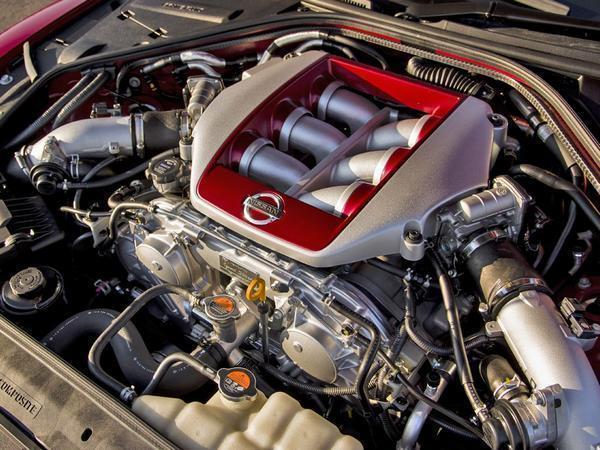What does twin turbo mean? PH Explains
Get the lowdown on twin-turbocharged engines

What is a twin-turbo engine?
Any engine that features a pair of turbochargers, such as the VR38DETT found in the Nissan GT-R, is a 'twin-turbo' engine.
What types of twin turbo set-ups are there?
Using two turbochargers, instead of one, grants several potential benefits - but the term 'twin turbo' doesn't tell you how the turbochargers are configured or how they operate. For example, one twin-turbocharged car could feature a conventional 'parallel' set-up. This is where a pair of identically sized turbochargers operate simultaneously.
Another twin-turbocharged car, on the other hand, could feature sequential turbochargers - a configuration in which only one turbocharger will be operational initially. Similarly, some engines are described as 'biturbo' or 'bi-turbo'; again, this only indicates the presence of two turbochargers and doesn't tell you how the particular system is designed.

How does a twin-turbo work?
When the throttle of a turbocharged engine is opened, the volume of exhaust gas being produced increases and the turbocharger begins to accelerate. A large turbocharger can take a long time to get up to speed, however, which results in poor low-speed performance and a sluggish response to the driver's input.
A smaller turbocharger, alternatively, will have a lighter compressor and turbine assembly. These are more easily accelerated by the exhaust gas, resulting in a quicker response and better delivery. Consequently, manufacturers often opt to use a pair of smaller turbochargers - or a small one in conjunction with a larger one, as is the case in some sequential installations.
It may also prove easier for a manufacturer to package two smaller turbochargers in an engine bay, instead of one larger one. This is a key consideration when it comes to engines with a V configuration, as having a single turbocharger will necessitate an exhaust crossover pipe from one bank to the other in order to feed all of the exhaust gas into the sole unit. Having one turbocharger per bank negates this problem.
Disadvantages of twin-turbos
There are, however, downsides to twin-turbocharged engines. For starters, they are inherently more complicated and more expensive. They can also be more difficult to maintain, due to the increased number of parts and potential failure points - particularly when the systems are older.

Common twin-turbocharged configurations
Parallel: Two turbochargers, which operate continually and work together to deliver pressurised air into the engine's intake manifold.
Parallel-sequential: One turbocharger operates throughout the rev range but the second is only phased in when the engine speed increases and enough exhaust gas is produced to drive it properly.
Series-sequential: One turbocharger provides boost initially and, as engine speed increases, a second unit is brought online. The first turbocharger is then shut down.
Compound: The turbochargers are connected in series, so the outlet of the compressor of the first is fed into the compressor inlet of the second. This allows the pressure of the incoming air to be increased significantly, as it works its way through the turbocharging 'stages', allowing for more power. This is why this technique is often called 'staged' turbocharging.

A brief history of twin-turbocharged production cars
The first production car to feature two turbochargers was the Maserati Biturbo, which was launched in December 1981. Early iterations featured a 2.0-litre V6, both banks of which benefited from an IHI RB-51 turbocharger; the matching turbochargers fed into a single carburettor and helped the all-aluminium engine produce 180hp and 187lb ft.
Maserati opted for this particular parallel configuration as the smaller turbochargers were quicker to respond than a large single turbocharger, better suiting the car's sporting nature. Export versions featured larger 2.5- and 2.8-litre V6s and, as fuel injection was introduced and technology advanced, power quickly rose. Ultimately, the Biturbo's output peaked at some 285hp in 1991.
Twin turbocharging quickly became well regarded, thanks to its ability to offer a good blend of power and response, and it was soon adopted by many - including Porsche, Toyota, Mazda, Nissan, BMW, Audi and Subaru.
It rightly says that in a V configuration twins are better as the exhaust system would have to be long and complex to meet in the middle for the turbo. But what about putting the exhaust in the middle of the V?
Or going further and talking about how the two big boys of 90's twin turbo's both used inline 6's with 2 3 branch manifolds. They could have gone for a single or twin but elected for twins, despite cost. as it reduced lag (the word lag isn't mentioned once, no conversation about turbo's can fail to include lag or spool!)
I would also have liked to have seen twin entry turbo's covered as this seems to bemuse people who are otherwise knowlegeable about cars. In my days as an MR2 Turbo owner I had people argue with me that my car was a twin turbo and had two turbo's. They couldn't understand that twin entry and simply twin are two totally different things.
Gassing Station | General Gassing | Top of Page | What's New | My Stuff



